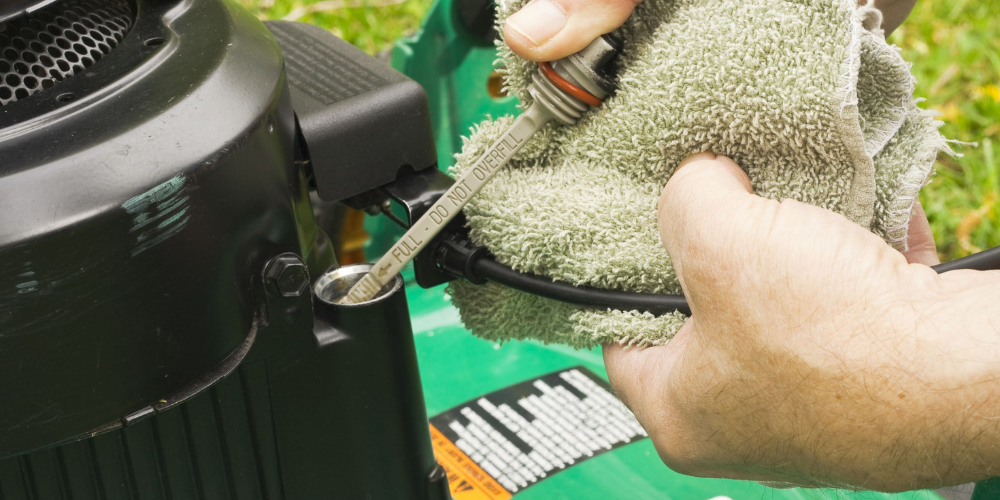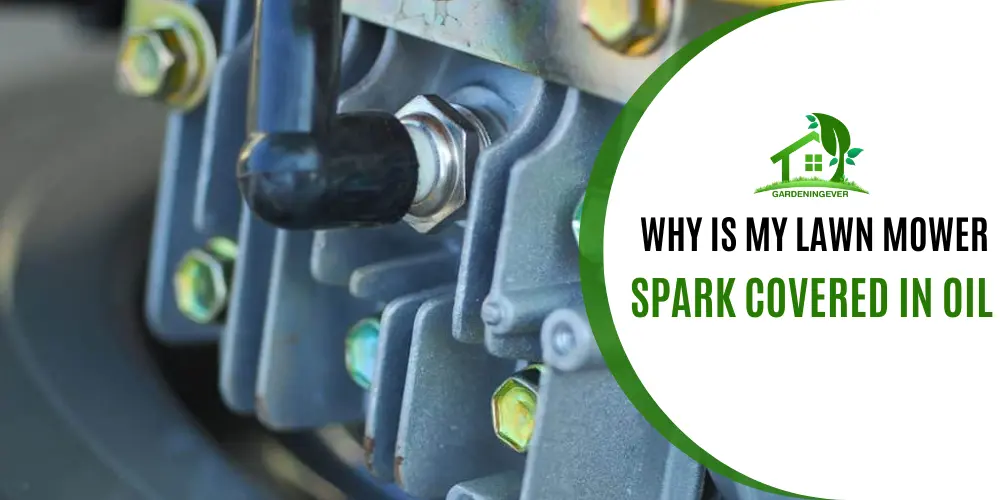Schematic blueprint of a typical lawnmower shows spark plug and blade assembly. The plug holds a candle that melts a type of fuel Depending on the type of fuel (gas, liquid) the spark plug actually produces a type of high-voltage current.
Commonly, if the plug is loose it’s usually a positive wire coming out of the plug or the spark plug is missing altogether. You’ll find that the oil level is extremely low at this time. As the engine runs, the oil drips out of the seat on top of the lawnmower. You’ll want to add new oil, if possible, before starting the mower. If you find that the lawnmower produces too much smoke, this means that the plug is too close to the spark plug hole and will be lost.

Lawnmowers Toro – This model has a plug that plenty of oil, depending on the model and make of the lawnmower.
Lawnmowers Honda hovers – These have a plug that plenty of oil, depending on the model and make of the lawnmower.
Lawnmowers Vizio – Era of the ” shadow box” type lawnmower has a plug that plenty of oil depending on the model and make of the lawnmower.
Lawnmowers disciplsoft – These have a plug that plenty of oil depending on the model and make of the lawnmower.
From the spark plug heater to the blades, spark plug fires are usually caused by small debris intake on the spark plug or too much oil on spark plug. Both can be easily fixed, the blades simply need to be kept clean. Another cause of spark plugs being ineffective is the dry cutting but usually just cutting grass leaves caused by an algae build-up. using a lawn mower at a slow speed once a week will help to avoid this problem. It’s also very important to keep the blades of your mower sharp enough to start the blade compartment in the off states like Sedona, Arizona.
Why are My Mower Spark Plugs Wet with Oil?
It may be a sign that there is a problem with your engine if you discover that your spark plugs are oil-wet. Spark plugs with oil on them may have oil leaking into the combustion chamber. There are multiple possible causes for this. Wearing piston rings, which allow oil to enter the combustion area during the compression process, is one way. Another reason for oil leaking into combustion chamber is intake stroke valves head seal get harmed. In either situation, oil on the spark plugs can impair their function, resulting in misfires and poor engine performance. To identify and solve the root of the problem, it is advised to have your mower evaluated by a skilled mechanic.
Oil on Spark Plugs Symptoms ?
A number of symptoms and problems can arise when oil gets on the spark plugs of an engine. Here are some points on the symptoms of oil on spark plugs:
Misfiring: Engine misfiring is one of the main signs of oil on spark plugs. A spark plug loses its ability to produce a spark when its cover in oil, which causes incomplete combustion and a misfire. This may result in harsh idling, hesitancy, and reduced engine performance.
Fouled spark plugs: Oil on the spark plugs can cause them to become fouled or covered with oil particles. As an outcome, the spark electrodes may be incapable of producing a capable spark. This led to poor ignition and engine performance.
Difficulty starting the engine: Oil-defective spark plugs can make it DIfficulty for the engine to start. The oil creates a wall between the electrodes, hindering the spark and making ignition more challenging. This can result in long cranking or difficulty starting the engine.
Decreased fuel efficiency: The combustion process is hampered by oil-coated spark plugs. As the engine strains to burn the fuel effectively, inefficient combustion results in decreased fuel economy. This may increase fuel usage.
Increased emissions: Higher emissions may be attributed to oil on spark plugs. Unburned fuel and higher amounts of pollutants in the exhaust gasses are caused by incomplete combustion brought on by oil contamination. A failed emissions test and environmental issues may emerge from this.
Smoky exhaust: Excessive smoke from the engine’s exhaust might be caused by oil on the spark plugs. A blue or grayish smoke that is evident during acceleration or under load is produced when the oil burns together with the gasoline. A sign of oil consumption and probable engine issues is this smokey exhaust.
Oil consumption: Oil leaking or pouring into the spark plugs may be a sign of problems with the internal engine, such as piston rings or valve seals. This could result to a high oil usage, requiring frequent oil top-ups in between regular oil changes.
It is advised to have your mower checked out and fixed by a skilled mechanic if you think there may be oil on the spark plugs. They are able to identify the root cause and carry out the required repairs to guarantee optimum engine performance and lifetime.
How Much do Spark Plugs Cost to Replace ?
When it comes to replacing a spark plug in a lawn mower, there are many factors that can impact costs such as brand and model specifications, recommended spark plugs types, and the proximity of repair shops.
Generally speaking, basic mower plugs range from two to ten dollars apiece but certain niche models may cost considerably more. If you choose to go about replacing your own plug yourself then expenses will be limited solely to purchasing a new one.
On the other hand though, opting to enlist help from certified mechanics could lead to more significant expenses arising from labor fees. The cost of a lawn mower spark plug replacement ranges from $2 to $50 or even higher, hinging upon variables such as the type and quality of the spark plug, availability, shipping costs, location or region of purchase, and labor charges.
How to Clean Lawn Mower Blades ?
The next area you can focus on, if there is dirt collected on the blades, is to clean off all the dirt. This is the most time-consuming because you have to work on both sides of the blades to clean the dirt away. Always use a heavy scrub brush to help loosen the dirt. A mains power pressure washer can be used or a garden hose with low pressure and a scrubbing attachment will work.

Once cleaned all that’s left is to fill the mower with gas or an oil mixture and test the lawnmower. Fill the lawn mower gas tank with enough gas to keep the engine running and good. Turn the mower on and try to cut a 2-inch lawn in the fastest way possible. If you find that the lawnmower cycles over and runs itself, the blades didn’t have enough fuel or were dirty the blades are dirty also. One of the best tips we can give is to take the blade out completely, that way the dirt can be cleaned out efficiently and you can get good cleaning of all the blades. Being sure that the blades are sharp is also important because dull blades can cause more stress on the engine. Try cutting some of the grass off of the blades and see how the lawn mower engine works.
Also read: How to Clean a Lawn Mower Grass Bag.
You can start to add some debris to the lawn, as long as you follow the same directions above, recycled lawn debris is dense and doesn’t leave much of a mess. Chances are you may not be able to find the old grass clippings when you replace the blades! With the lawnmower running, remove the grass from the bag and dump it into the grass before cutting it off. With the lawnmower running, you can now start the engine and allow the blade to completely “up shop”.
How Can I Prevent This From Happening Again?
- Regularly check the oil level: If the oil reservoir is overfilled, oil may flow into the combustion chamber and clog the spark plug. Check to see that the oil level is within the advised range.
- Replace the air filter because a clogged filter will prevent the engine from receiving enough air and will make it work harder than it needs to. Oil consumption and a fouled spark plug may result from this. Regular air filter replacement will stop this.
- Regular oil changes assist to maintain a smooth running engine and avoid oil accumulation in the combustion chamber.
- Check the piston rings A fouled spark plug can be caused by an oil leak into the combustion chamber caused by a worn piston ring. Ask a technician to frequently inspect the piston rings and replace them if necessary.
- Inadequate valve seals might also cause oil to seep into the combustion chamber. Check the valve seals. Ask a mechanic to periodically inspect the valve seals and replace them if necessary.
- Use the proper oil: Using the incorrect oil might result in a spark plug that is fouled and excessive oil consumption. The suggested type of oil to use in your mower may be found in the owner’s handbook.
Conclusion
If you find that your lawn mower spark plug is covered in oil, then its a signs of issue within the engine. Oil on the spark plug can result from multiple causes, like leaking or damaged gasket, worn pistion rings, or high oil consumption. Symptoms of this oil pollution include misfiring, trouble starting the engine, reduced mileage, and increased emissions. To increaase your mower life span it is essential to address this problem right away by getting expert help to identify and fix the underlying issue.
FAQs
Can I clean oil off of spark plugs?
You can remove oil from spark plugs with a wire brush or a professional cleaner, yes. Verify that your engine’s spark plugs are fully dry before replacing them.
How to Disinfect lawn Mower Blades ?
To disinfect lawn mower blades, wipe them down with a solution of water and bleach or a disinfectant spray and let them air dry before using.
How to Clean Riding Lawn Mower Blades ?
Start by disconnecting the spark plug, then use a wrench or socket to remove the blades from the riding lawn mower. Clean the blades thoroughly with a wire brush or pressure washer, removing any grass clippings or debris, and then reattach them to the mower securely before reconnecting the spark plug.
How to fix oil on spark plugs ?
An experienced technician can replace damaged gaskets, seals, or rectify engine problems, which are some of the root causes of oil on spark plugs.
Is oil on spark plugs bad ?
Yes, oil on spark plugs is bad as it can cause reduce performance and cause other engine issues. It is recommended to find out the problem to prevent further damage.

